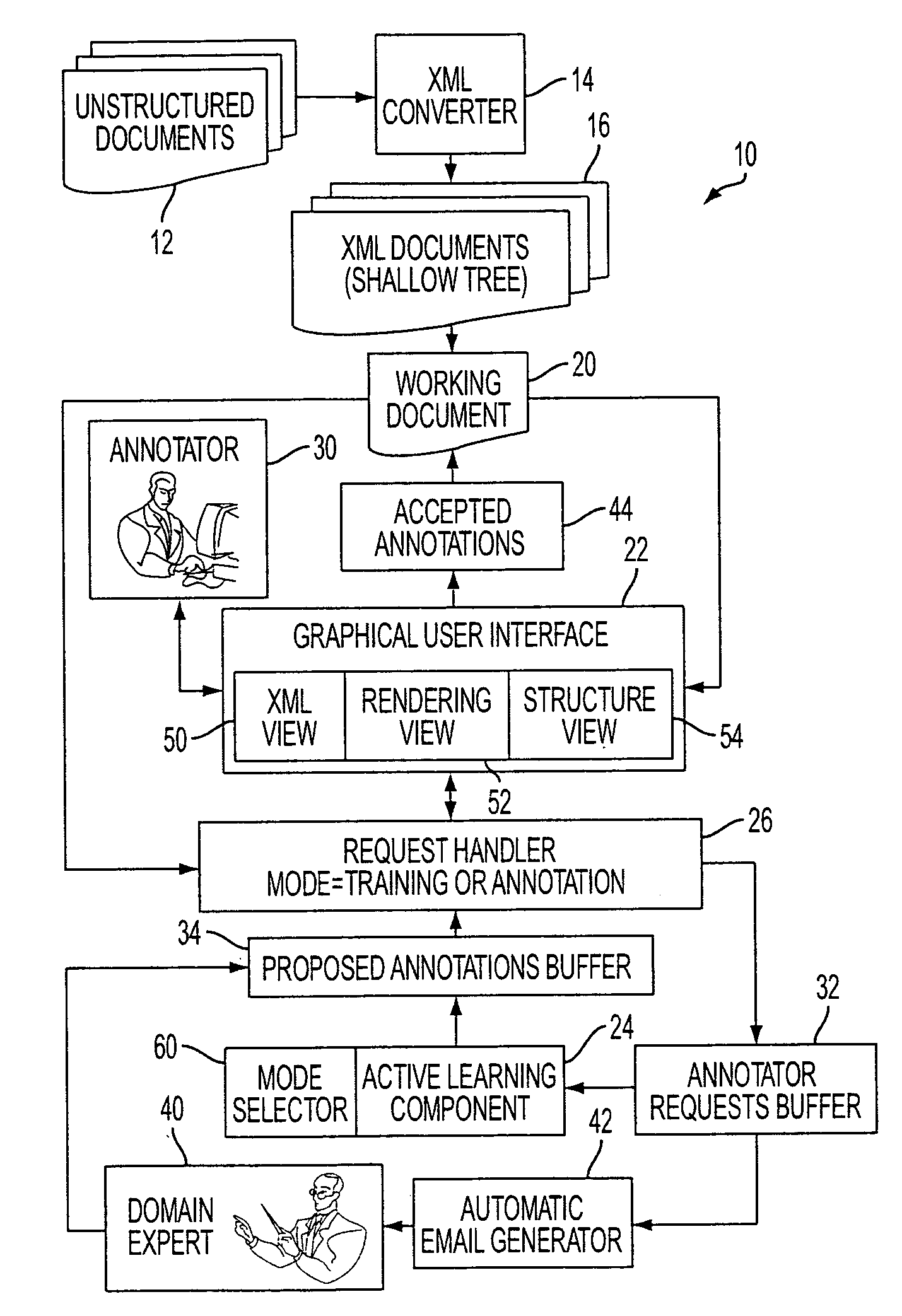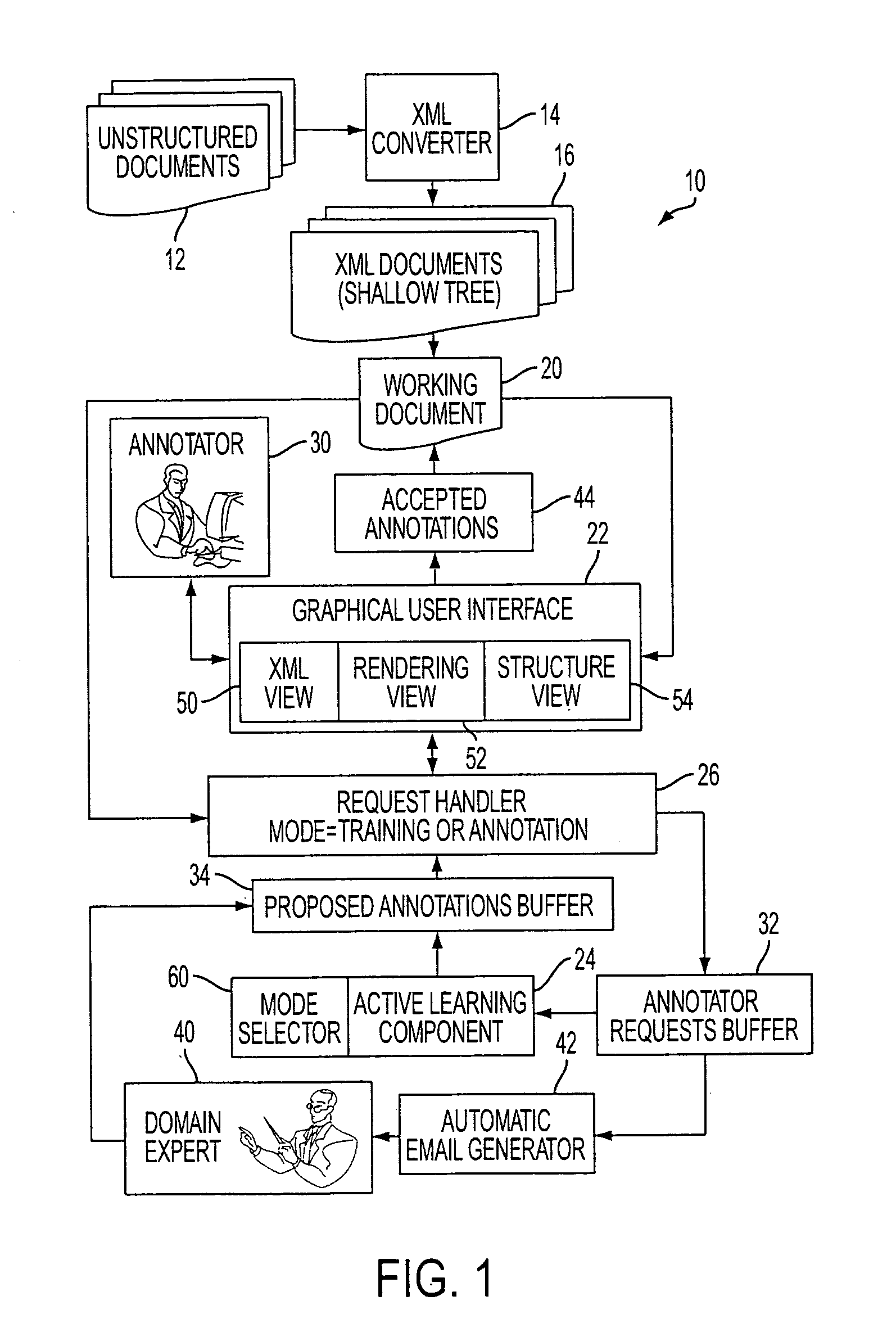Interactive learning-based document annotation
a learning-based, document-based technology, applied in the field of information processing arts, can solve the problems of difficult and time-consuming manual annotation, difficulty in acquiring a suitable and uncertainty of whether an available set of pre-annotated training documents is accura
- Summary
- Abstract
- Description
- Claims
- Application Information
AI Technical Summary
Problems solved by technology
Method used
Image
Examples
Embodiment Construction
[0013]With reference to FIG. 1, a document annotation system 10 receives documents 12 for annotation. In FIG. 1, the documents 12 are unstructured documents, for example in PDF, PostScript, Microsoft Word, or another substantially unstructured format. The documents 12 are initially processed by an XML converter 14 to generate corresponding documents 16 in an XML format having shallow structuring, such as a structure in which each sentence or physical line of text corresponds to a leaf of the XML document. In some embodiments, the received documents may already be in XML format, in which case the XML converter 14 is suitably omitted. While the illustrated embodiment employs shallow XML formatted documents 16, in other embodiments the annotator may operate on documents 16 which are in another structured format besides XML, such as on documents in HTML, SGML, or another structured format. For example, HTML may be an advantageous format for the documents 16 because HTML-formatted docume...
PUM
 Login to View More
Login to View More Abstract
Description
Claims
Application Information
 Login to View More
Login to View More - R&D
- Intellectual Property
- Life Sciences
- Materials
- Tech Scout
- Unparalleled Data Quality
- Higher Quality Content
- 60% Fewer Hallucinations
Browse by: Latest US Patents, China's latest patents, Technical Efficacy Thesaurus, Application Domain, Technology Topic, Popular Technical Reports.
© 2025 PatSnap. All rights reserved.Legal|Privacy policy|Modern Slavery Act Transparency Statement|Sitemap|About US| Contact US: help@patsnap.com



